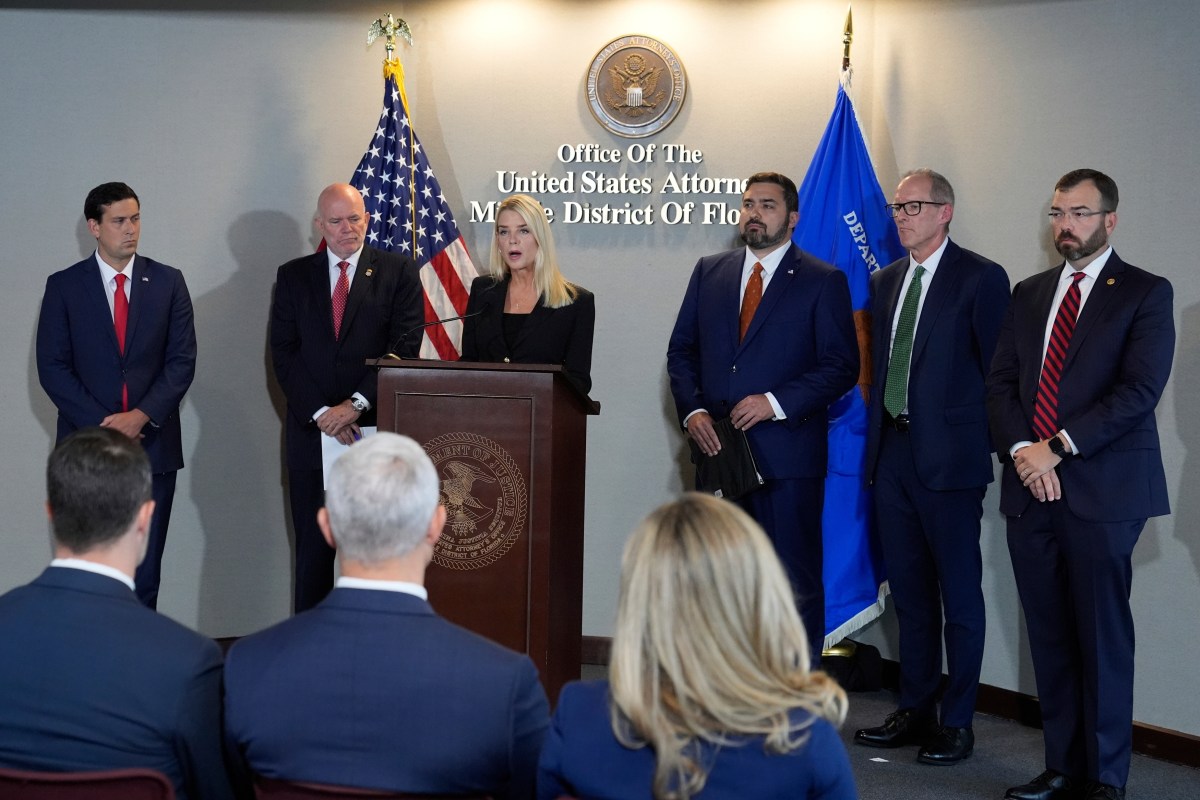
In a rare media appearance, Vermont’s top federal prosecutor joined U.S. Attorney General Pam Bondi in Florida to tout successful arrests of alleged human traffickers smuggling people into the United States.
Acting U.S. Attorney for the District of Vermont Michael Drescher, along with law enforcement peers from Texas and Florida, celebrated the expanding work of Joint Task Force Alpha, a U.S. Department of Justice and Department of Homeland Security partnership targeting human smuggling and trafficking operations in Mexico and Central America.
What once might have been considered a southern border issue has increasingly shown up at the country’s northern border with Canada, according to the country’s top law enforcement official.
“We are investigating and prosecuting their crimes more aggressively than ever, and Joint Task Force Alpha is the tip of the spear,” Bondi said.
Drescher highlighted the recent arrest of Norma Linda Lozano, charged with seven criminal counts including conspiracy to commit “alien smuggling.” She allegedly attempted to profit off transporting people who were in Vermont illegally after they entered from Canada. Lozano’s indictment was unsealed Wednesday, according to federal court records.
“Offenses such as those charged pose a risk to the nation’s security,” Drescher said, noting Lozano allegedly trafficked children, one of whom was located alongside luggage in her vehicle.
“I especially want to thank you, Attorney General Bondi, for bringing attention to the extraordinary work that the men and women of the United States Border Patrol and Homeland Security Investigations are doing in Swanton Sector,” he said, “the portion of the U.S.-Canada border that includes Vermont, northern New York and New Hampshire.”
Bondi touted Joint Task Force Alpha’s work, part of President Donald Trump’s efforts to eliminate international drug cartels. The Trump administration has labeled some of these organizations as terrorist groups.
On Tuesday, the U.S. military carried out an airstrike on a boat Trump said contained members of the Venezuelan cartel Tren De Aragua. Eleven people were killed, the NYTimes reported, and Trump said the boat was transporting drugs.
At the Thursday press conference, Bondi characterized the southern border with Mexico as “secured,” a change she said was shifting cartel activities to the U.S. border with Canada.
“As our U.S. attorney in Vermont knows,” she said, then referencing the northern border, “it’s gotten much worse.”


